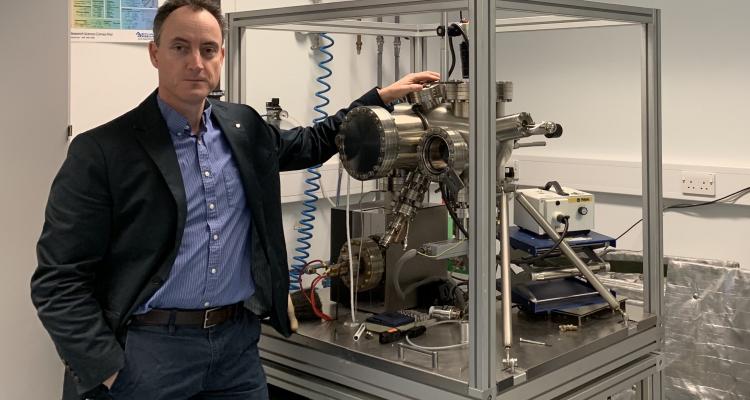Nanotechnology has been a buzz word for almost 20 years now, and it’s time to deliver on the initial promise. This is one of my guiding principles. I carry out research, which although rooted in fundamental science, aims to answer some of the big questions facing us today, such as (i) how can we increase efficiency and safety of oil recovery and reduce the environmental impact of doing so; (ii) can we go beyond anecdotal evidence as to the efficacy of personal care products; (iii) using nanotechnology to improve healthcare; (iv) what are the ultimate limits to device performance using graphene; (v) what role do surfaces play in chemical reactions and (vi) the relationship between shape and size in determining the properties of matter. Quite a mixed bag of interests, which may seem utterly devoid of a common link at first glance, but looking closer, all involve using the fact that nano-sized things behave differently to larger things.
Much of this research is funded by industry, and finding meaningful answers to these questions lies within our grasp. This breadth of interests has always been a trait I have possessed, and while it has turned out to be extremely fruitful, this was not always so – it used to be seen as a lack of focus. I never wanted to just work on one topic as I would invariably end up getting bored very quickly. As I was coming to the end of my undergraduate days, I had an offer of a PhD position in Oxford, to work on the fusion project there. Very exciting, I thought, but in a similar way to Bruce Lee who said he studied Philosophy so he could “think deep thoughts about being unemployed” I was concerned that I may end up highly qualified but largely unemployable. I therefore decided to work on a new topic- Near-field Optics, which was a new type of microscope that allows us to observe materials with a resolution around 10 times better than conventional optical microscopes, and that’s the size range where all sorts of interesting properties of materials start to be noticeable. That opened my eyes to the possibilities of exploring materials at the nanometer scale, and the treasures that lay within, and it has evolved into the list of interests above, which is merely the tip of the iceberg. I spent a few years pouring much of this into a popular science book which will appear on the shelves mid-March. After much soul-searching, I decided to go for the risky title “Size really does matter – the nanotechnology revolution” as I figured if nothing else, people would look twice!
In my role as a Faculty Member at the University, I have taught a Masters course in Nanotechnology and Quantum Mechanics for 20 years, and no two years have been the same as there is so much change afoot. I have also developed and spent 10 years teaching an electronics course for part 1 Engineering, and am currently in the middle of writing a textbook on that for Cambridge University Press. At the lab, we have a suite of microscopes, some bought and some home-made, which we use daily to carry out the experiments mentioned above, and as my students can attest, my favourite place is being hands-on in the middle of an experiment in the lab. Inevitably, the time available to do this has dwindled over the years with other roles, tasks and challenges. At the College level, I have been a Fellow of Girton since 2001 where I am Director of Studies for part II Engineering, a Tutor, and also Admissions Tutor for Engineering. The atmosphere and ethos of College has always been one that I am proud to be a part of, as it is inclusive and values the individual, and there is a genuine warmth amongst the Fellowship.

